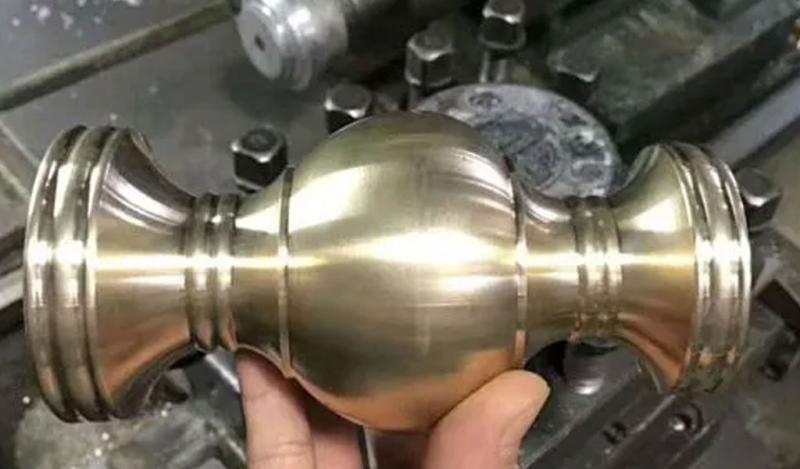femtosecond laser cutting
Laser cutting technology is widely used in the processing of metal and non-metal materials, which can greatly reduce processing time, reduce processing costs, and improve workpiece quality. Pulse laser is suitable for metallic materials, and continuous laser is suitable for non-metallic materials. The latter is an important application field of laser cutting technology. Modern lasers have become the "sword" that people dream of "cutting iron like mud".
Femtosecond lasers, which are getting smaller and more powerful, cover a wider range of wavelengths, and become cheaper, meet the needs of consumer electronics, medical, automotive and many other markets. Femtosecond Laser Structural Color Incorporating femtosecond laser cutting into micromachining equipment provides manufacturers with a superior way to process smaller, thinner parts.
Laser cutting uses a focusing mirror to focus the CO2 laser beam on the surface of the material to melt the material. At the same time, the compressed gas coaxial with the laser beam is used to blow away the melted material, and the laser beam and the material are relatively moved along a certain trajectory, thereby forming A cut of a certain shape. Since the 1970s, with the continuous improvement and development of CO2 laser and CNC technology, it has become an advanced processing method for industrial plate cutting. In the 1950s and 1960s, the main methods for plate blanking and cutting were: oxyacetylene flame cutting was used for medium and thick plates; shearing was used for thin plates, stamping was used to form complex parts in large quantities, and vibration shearing was used for single pieces. After the 1970s, in order to improve the cutting quality of flame cutting, oxyethane precision flame cutting and plasma cutting were promoted. In order to reduce the manufacturing cycle of large stamping dies, CNC nibbling and electrical machining technologies have been developed. Various cutting and blanking methods have their advantages and disadvantages, and have a certain scope of application in industrial production.
Ultrafast pulsed lasers typically have pulse lengths less than 1 nanosecond. Femtosecond lasers go a step further and can produce high-quality ultrafast pulses with periods ranging from 30 femtoseconds to 800 femtoseconds. From a human perspective, how short is this time? One way is to compare the time the laser is on and off. Commonly used models are generally 100 femtosecond laser pulses with a repetition rate of 100KHz. If you convert 100 femtoseconds into 1 second, it would be 3.5 years before the next pulse occurs! This effectively minimizes the time during which heat affects the material and maximizes the time during which heat is released from the material. This gives femtosecond lasers several major advantages.
Laser cutting technology has the following advantages:
First, high accuracy: positioning accuracy 0.05mm, repeat positioning accuracy 0.02mm.
Second, the slit is narrow: the laser beam is focused into a small light spot, so that the focus reaches a very high power density, the material is quickly heated to the vaporization level, and evaporates to form holes. As the beam moves linearly relative to the material, the holes continuously form slits with a very narrow width. The incision width is generally 0.10-0.20ram.
Third, the cutting surface is smooth: the cutting surface has no burrs, and the surface roughness of the cutting is generally controlled within Ral2.5; A.
Fourth, fast speed: the cutting speed can reach 10m/min, and the maximum positioning speed can reach 70m/m/n, which is much faster than wire cutting.
Fifth, the cutting quality is good: non-contact cutting, the trimming edge is very little affected by heat, there is basically no thermal deformation of the workpiece, and the sagging formed when the material is punched and sheared is completely avoided, and the cutting seam generally does not require secondary processing.
Sixth, no damage to the workpiece: the laser cutting head will not come into contact with the surface of the material, ensuring that the workpiece will not be scratched.
In summary, is femtosecond laser cutting easy to learn? Femtosecond laser cutting technology is being increasingly used in China's industrial production, and foreign countries are researching and developing cutting technologies and devices for higher cutting speeds and thicker steel plates. In order to meet the increasingly higher requirements for quality and production efficiency in industrial production, attention must be paid to solving various key technologies and implementing quality standards so that this new technology can be more widely used in China.
The application of this technology is not very wide now, but with the development of the country, many heavy industries will need this technology in the future. Therefore, this technology is not very popular now, but it may have the opportunity to be vigorously developed in the next 15-20 years.
The application of femtosecond lasers can often significantly improve productivity and reduce production costs. Producers can obtain high-quality geometries. The processed hole has a precise shape and smooth inner wall, which minimizes the generation of surface debris. As shown below, this clean, debris-free cut hole in stainless steel foil highlights the advantages of femtosecond laser for processing thin materials.
ABOUT Be-Cu.com
Many medical devices and instruments contain components produced from tubing or round material. Marker bands from platinum or platinum iridium, stent laser cutting from nitinol, or high flex interlocked stainless steel tubing are all possibilities with the high-volume micro machining solutions provided by Be-Cu.com. The femto tube cutting laser will provide a cut kerf as small as 18 microns, burr-free and without any heat affected zone. The femtosecond tube cutting laser has 3-axis capabilities, enabling flexibility such as chamfers and additional features on marker bands, stents, cannulas, and other micro components. This equipment also features a high-accuracy C-axis for expert repeatability on high volume components.
Our femtosecond tube cutter with 3-axis control can cut and chamfer rings, marker bands, loops, etc. From Laser Cutting Nitinol stents to marker bands, needles to cannulas, surgical instruments such as probes, rings, forceps, gauges, hooks, loops, and beyond, Be-Cu can be your partner for your product development and high-volume manufacturing needs. Be-Cu can provide components from tubing or round material down to Ø0.25mm (Ø.010”). We welcome your micro laser tube cutting inquiries – challenge us!
We are innovative machining services and tooling manufacturing companies with an established reputation for excellence in high quality and precision. We achieve this by combining motivated employees who focus on superior results, a positive work environment, and the latest technology. This promotes continuous improvement and personal growth, creating pride and ownership in every part we design and manufacture. Our goal is to supply products and services held to the highest standard of quality, taking precision to a new level. Our vision is to transform the world by enabling innovation.









Comments